Kaiqian Qu
Unleashing the Potential of Beamspace Modulation in Near-Field MIMO: Opportunities and Challenges
Sep 29, 2024



Abstract:The principal distinction in transitioning from far-field multiple-input multiple-output (MIMO) systems to near-field MIMO configurations lies in the notable augmentation of spatial degrees of freedom (DoF). This increase is not static;rather, it dynamically fluctuates in response to user mobility. A critical challenge emerges in effectively leveraging this significantly enhanced and continuously evolving spatial DoF, particularly when constrained by a limited and energy-intensive array of radio frequency (RF) chains. This article presents an exhaustive review of the current methodologies for exploring spatial DoF in MIMO systems, with a particular emphasis on the near-field context. Central to this review is the exploration of beamspace modulation, a technique that ingeniously capitalizes on the increased and dynamic spatial DoFs inherent in near-field MIMO systems. This strategic exploitation is demonstrated to yield significant enhancements in both spectral efficiency and system reliability. Furthermore, the article delves into a detailed analysis of the multifaceted challenges associated with implementing this technology. Through this comprehensive evaluation, the work provides crucial insights into ongoing efforts to navigate these challenges and suggests potential pathways for future research in this rapidly evolving field.
Unified Integrated Sensing and Communication Signal Design: A Sphere Packing Perspective
Mar 25, 2024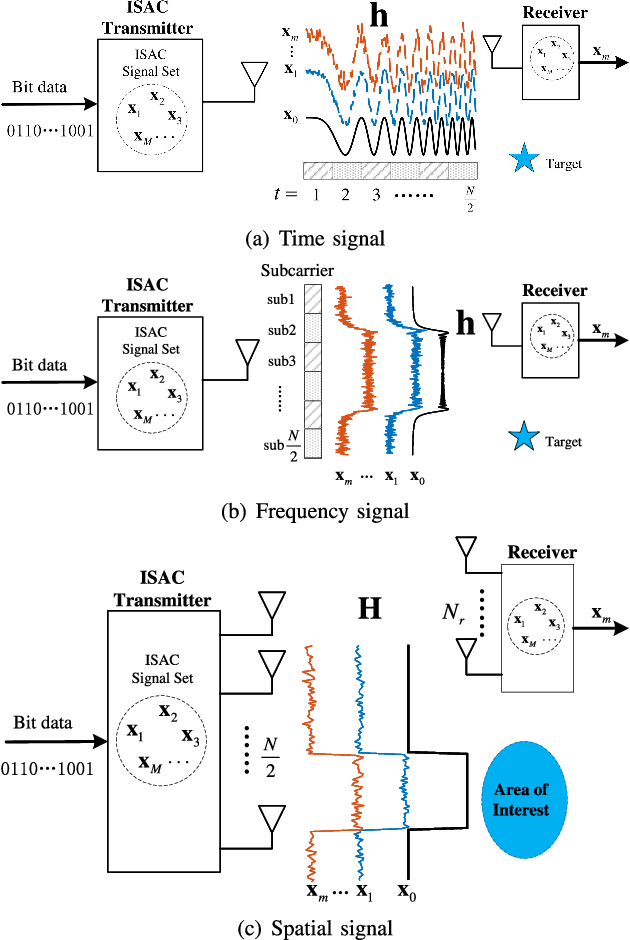
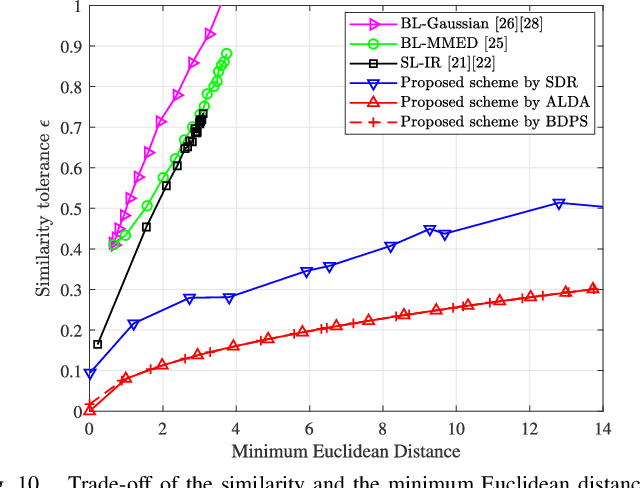
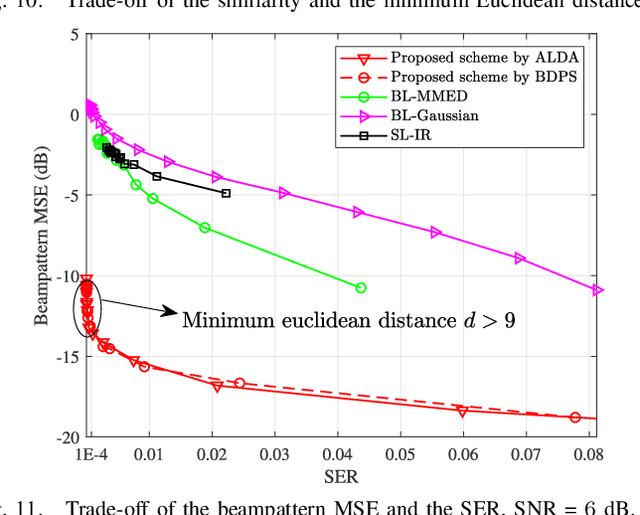
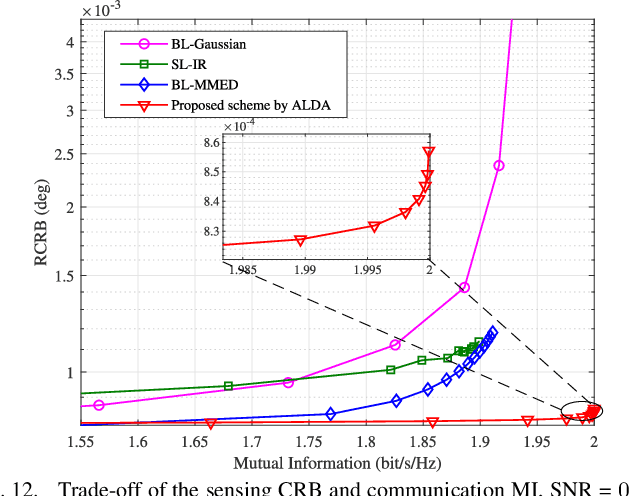
Abstract:The design of communication signal sets is fundamentally a sphere packing problem. It aims to identify a set of M points in an N -dimensional space, with the objective of maximizing the separability of points that represent different bits.In contrast, signals used for sensing targets should ideally be asdeterministic as possible. This paper explores the inherent conflict and trade-off between communication and sensing when these functions are combined within the same signal set. We present a unified approach to signal design in the time, frequency, and space domains for integrated sensing and communication (ISAC), framing it as a modified sphere packing problem. Through adept formula manipulation, this problem is transformed into a large-scale quadratic constrained quadratic programming (QCQP) challenge. We propose an augmented Lagrangian and dual ascent (ALDA) algorithm for iterative problem-solving. The computational complexity of this approach is analyzed and found to be daunting for large, high-dimensional signal set designs. To address this, we introduce a bit-dimension-power splitting (BDPS) method. This method decomposes the large-scale QCQP into a series of smaller-scale problems that can be solved more efficiently and in parallel, significantly reducing the overall computational load. Extensive simulations have been conducted to validate the effectiveness of our proposed signal design methods in the context of ISAC.
Green Holographic MIMO Communications With A Few Transmit Radio Frequency Chains
Sep 22, 2023



Abstract:Holographic multiple-input multiple-output (MIMO) communications are widely recognized as a promising candidate for the next-generation air interface. With holographic MIMO surface, the number of the spatial degrees-of-freedom (DoFs) considerably increases and also significantly varies as the user moves. To fully employ the large and varying number of spatial DoFs, the number of equipped RF chains has to be larger than or equal to the largest number of spatial DoFs. However, this causes much waste as radio frequency (RF) chains (especially the transmit RF chains) are costly and power-hungry. To avoid the heavy burden, this paper investigates green holographic MIMO communications with a few transmit RF chains under an electromagnetic-based communication model. We not only look at the fundamental capacity limits but also propose an effective transmission, namely non-uniform holographic pattern modulation (NUHPM), to achieve the capacity limit in the high signal-to-noise (SNR) regime. The analytical result sheds light on the green evaluation of MIMO communications, which can be realized by increasing the size of the antenna aperture without increasing the number of transmit RF chains. Numerical results are provided to verify our analysis and to show the great performance gain by employing the additional spatial DoFs as modulation resources.
Near-Field Integrated Sensing and Communication: Performance Analysis and Beamforming Design
Aug 12, 2023

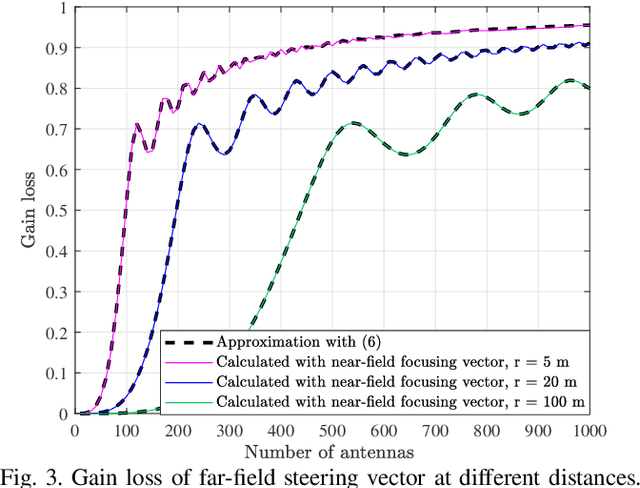

Abstract:This paper explores the potential of near-field beamforming (NFBF) in integrated sensing and communication (ISAC) systems with extremely large-scale arrays (XL-arrays). The large-scale antenna arrays increase the possibility of having communication users and targets of interest in the near field of the base station (BS). The paper first establishes the models of electromagnetic (EM) near-field spherical waves and far-field plane waves. With the models, we analyze the near-field beam focusing ability and the far-field beam steering ability by finding the gain-loss mathematical expression caused by the far-field steering vector mismatch in the near-field case. We formulate the NFBF design problem as minimizing the weighted summation of radar and the communication beamforming errors under a total power constraint and solve this quadratically constrained quadratic programming (QCQP) problem using the least squares (LS) method. Moreover, the Cram\'er-Rao bound (CRB) for target parameter estimation is derived to verify the performance of NFBF. Furthermore, we also perform power minimization using convex optimization while ensuring the required communication and sensing quality-of-service (QoS). The simulation results show the influence of model mismatch on near-field ISAC and the performance gain of transmit beamforming from the additional distance dimension of near-field.
Near-Field Integrated Sensing and Communications: Unlocking Potentials and Shaping the Future
Aug 05, 2023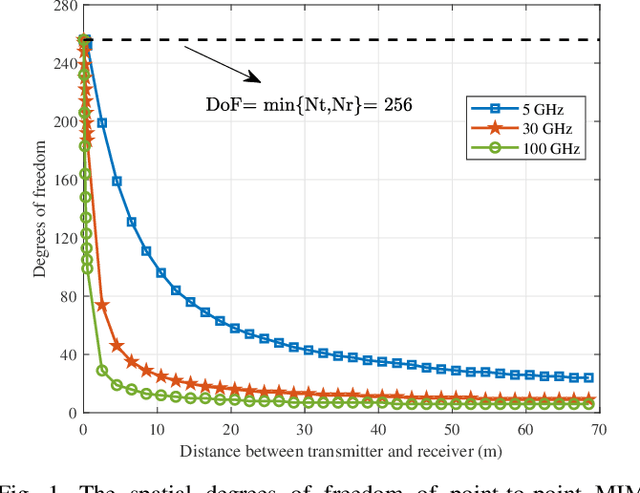
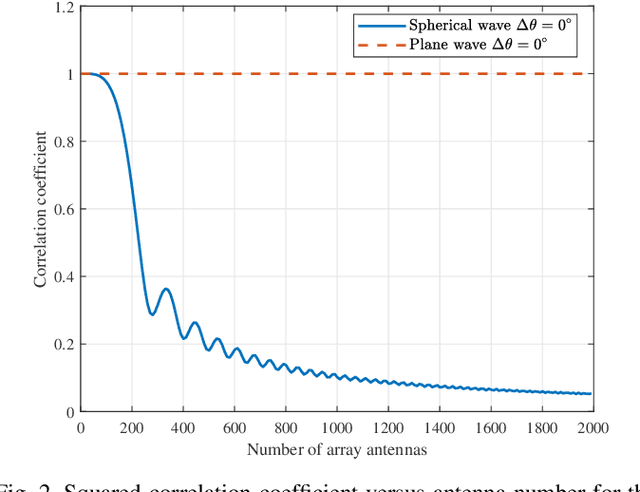
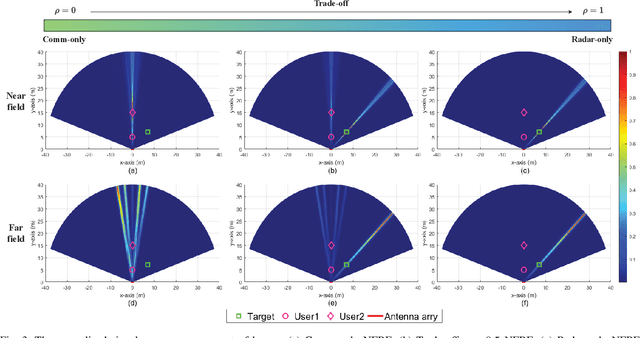
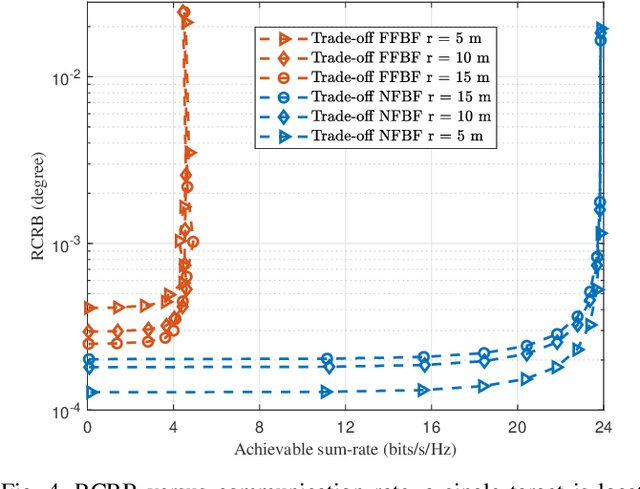
Abstract:The sixth generation (6G) communication networks are featured by integrated sensing and communications (ISAC), revolutionizing base stations (BSs) and terminals. Additionally, in the unfolding 6G landscape, a pivotal physical layer technology, the Extremely Large-Scale Antenna Array (ELAA), assumes center stage. With its expansive coverage of the near-field region, ELAA's electromagnetic (EM) waves manifest captivating spherical wave properties. Embracing these distinctive features, communication and sensing capabilities scale unprecedented heights. Therefore, we systematically explore the prodigious potential of near-field ISAC technology. In particular, the fundamental principles of near-field are presented to unearth its benefits in both communication and sensing. Then, we delve into the technologies underpinning near-field communication and sensing, unraveling possibilities discussed in recent works. We then investigated the advantages of near-field ISAC through rigorous case simulations, showcasing the benefits of near-field ISAC and reinforcing its stature as a transformative paradigm. As we conclude, we confront the open frontiers and chart the future directions for near-field ISAC.
Privacy and Security in Ubiquitous Integrated Sensing and Communication: Threats, Challenges and Future Directions
Aug 05, 2023Abstract:Integrated sensing and communication (ISAC) technology is one of the featuring technologies of the next-generation communication systems. When sensing capability becomes ubiquitous, more information can be collected, which can facilitate many applications in intelligent transportation, unmanned aerial vehicle (UAV) surveillance and healthcare. However, it also faces many information privacy leakage and security issues. This article highlights the potential threats to privacy and security and the technical challenges to realizing private and secure ISAC. Three promising combating solutions including artificial intelligence (AI)-enabled schemes, friendly jamming and reconfigurable intelligent surface (RIS)-assisted design are provided to maintain user privacy and ensure information security. Case studies demonstrate their effectiveness.
 Add to Chrome
Add to Chrome Add to Firefox
Add to Firefox Add to Edge
Add to Edge